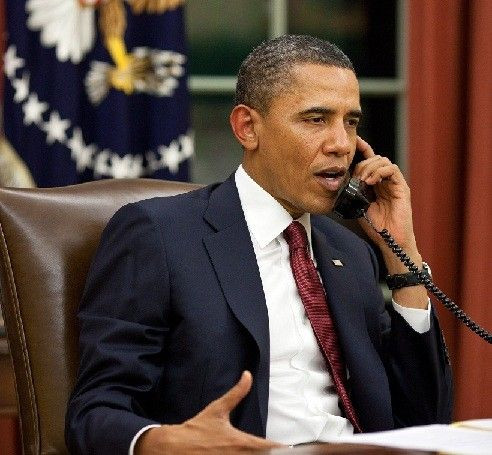Analysis: Canada has lessons, no answers, for U.S. debt woes

Canada has some lessons for the United States in terms of slashing deficits and winning top tier ratings back, but there are deep differences between the two countries in terms of what might work.
Canada's Liberal government won broad political support for its efforts to cut the deficit in the decade after its first international ratings downgrade in 1992, but the United States faces deep political divisions about how to respond.
Ottawa's chosen route back to surplus involved both spending cuts and tax hikes, in a ratio of roughly seven to one. The budget was balanced within six years, and Canada won its prized AAA rating back within a decade.
"You basically have to grasp the nettle," Paul Martin, the Liberal government's finance minister at the time, told Reuters in an interview. "Fundamentally, you have to have an end game, you have to take immediate action."
Martin, also a former prime minister, said he was confident the United States could balance its budget, but it would need tax hikes as well as spending cuts.
"The actions have to be primarily on cutting expenditures, but the fact is that you cannot do it unless everybody is willing to come to the party, and if you eliminate tax increases... you're never going to make it."
Tough advice also came from Monte Solberg, who was finance critic for the conservative opposition Reform Party during Martin's deficit-cutting years.
In a display of inter-party co-operation that's rare outside wartime, Reform backed the Liberals as they cut the deficit, ushering in an era where it became political suicide for a federal Canadian politician even to talk about running a deficit.
"If you don't make the cuts now in things like some of the big entitlement programs, then those programs themselves will have to be cut much more deeply in the future and the pain will be much deeper," Solberg, whose now-defunct Reform Party has small-government parallels with the U.S. Tea Party, said of the U.S. budget mess.
"So better do it now -- it's the old saying, you can't dock the dog's tail an inch at a time. You should just do the job, get it done, face up to the pain and in the end you'll be better off."
DEBT HEADACHE
Canada's headaches with international rating agencies started in 1992 as first Standard & Poor's and then Moody's (in 1994) lowered its debt ratings, alarmed about rising public debt levels along with concern that a separatist movement in French-speaking Quebec could tear the country apart.
The Wall Street Journal rubbed salt in the wounds, with a January 1995 editorial that called Canada "an honorary member of the Third World." With Canada's debt-to-GDP ratio heading for a record 72 percent, the moniker stung. The budget cuts were painful -- health care was hit especially hard -- but the political will never faltered.
"I think it's interesting that in terms of the Canadian experience, the fiscal rebalancing was done by a Liberal government, so it shows that you don't need to be on the far right of the political spectrum to get government cuts and fiscal rebalancing," said Craig Alexander, chief economist at Toronto-Dominion Bank, Canada's second largest.
"Even though it didn't fit with the government's ideology it actually embarked on very serious fiscal tightening. They put together a long-term plan as to how they were going to rebalance the finances of the country and then they delivered and executed on that plan, and I think that's the message for the United States."
HARD TO COPY
But there are many reasons the Canadian model won't work for Washington right now, including the political deadlock, the vast burden on U.S. government spending from the hard-to-cut military complex, and the fact that the overall world economy is in far more fragile shape than it was in the 1990s, when the United States also ran a budget surplus.
"We're recovering from a global credit market meltdown, a Great Recession The U.S. has been at war for more than 10 years, so the economic fundamentals are far different, and so the accumulated deficits that the U.S. has on its balance sheet will be difficult to address by economic growth," said Queen's University finance professor Louis Gagnon.
"There doesn't seem to be any clear line of sight toward a balanced budget. We're seeing trillion-dollar deficits for almost as far at the eye can see."
The U.S. budget deficit has soared to $1.4 trillion or 9 percent of GDP. Canada's deficit never climbed above 6 percent of GDP, a more manageable number.
Moody's Investor Services, whose 1995 second downgrade of Canada was often seen as the low point in the country's budgetary problems, said Ottawa's evangelistic approach to not running up a deficit had been a factor in the agency's decision to give back the AAA rating in May 2002.
"We were convinced that the debt reduction program was going to continue over the medium term because there was a political consensus on that. We believed that no matter which major party was in power, that they would continue with that," said Steven Hess, lead analyst for the United States and Canada at Moody's.
"Just as a peculiarity, among the 16 countries that we have rated triple A, the U.S. is the only one that doesn't have a parliamentary system. Now whether that's good or bad is a subject for discussion, I'm not opining one way or the other, just pointing it out."
© Copyright Thomson Reuters 2024. All rights reserved.




















